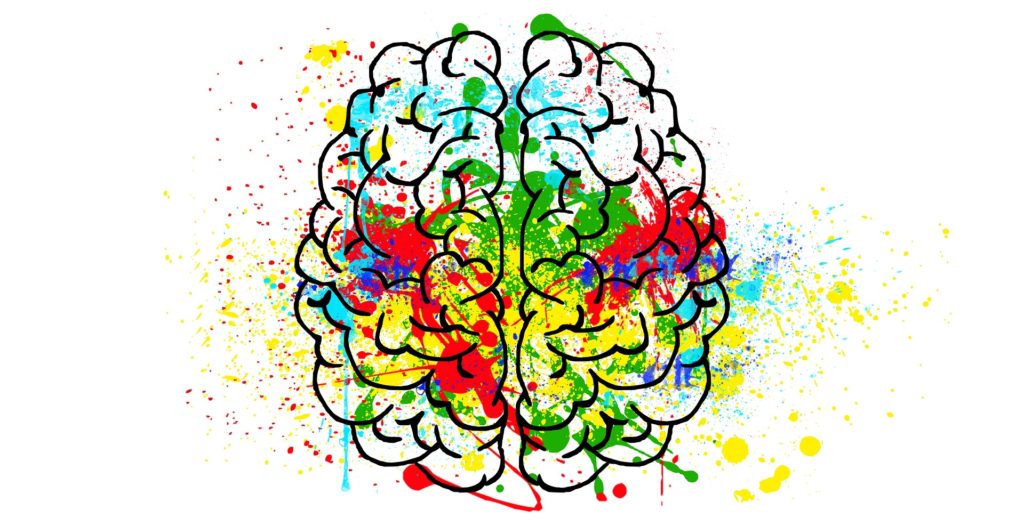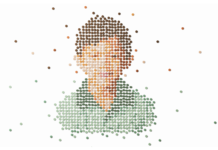A new study out of Yale University uses evolutionary biology to debunk the idea that there is a “normal” or “optimal” brain. The authors, Avram Holmes and Lauren Patrick, argue that human variation is common and does not imply sickness, including within the brain.
“A fundamental challenge facing clinical neuroscientists is how to best conceptualize healthy population-level behavioral and neurobiological variation when working to understand the etiology of dimensional illnesses,” Holmes and Patrick write.

Humans are quite variable on most traits, and difference from the average is not taken as evidence of pathology. For instance, someone who is much shorter (or taller) than the average person would not necessarily be flagged as having a physical illness. However, neuropsychology relies on the assumption that being different from the average is in itself a sign of disease.
That is, neuropsychological research relies on comparisons to the average brain. But because of the variability within any population, the average may not mean much.
For instance, a neuropsychological study might compare two groups—one group with a psychiatric diagnosis, and another group without the diagnosis. Both groups exhibit high variability in whatever trait being measured (for instance, brain volume in specific regions), and the groups overlap considerably. However, the average might be slightly different between the two groups. This difference could even be statistically significant if there were a large number of participants.
In fact, this is precisely what has been reported as groundbreaking findings. A study last year suggested that brain volumes were smaller for people with ADHD. However, despite this statistical finding based on averages, more than 95% of the people in the study had brain volumes that were overlapping—that is, people in both groups (with ADHD diagnoses and without) had the same brain volumes.
Only a very few outliers had brain volumes that were actually outside the variability of the two groups. Thus, out of 100 people with ADHD, only five could be expected to have brain volumes that were not equal to those of people in the “healthy” control group. Even this finding was criticized because when IQ was factored into the equation, the variability in the two groups completely overlapped.
Holmes and Patrick criticize just this sort of research when they write that “Analytic approaches that focus on group differences may mask the presence of substantial overlap in phenotypic distributions across populations, providing an illusion of diagnostic specificity.”
That is, a focus on whether the average is different between two groups does not effectively demonstrate whether individuals in both groups overlap. Thus, findings in a group of people with a mental health diagnosis are reported as pathological deviations from the healthy brain, when in fact they are the same as some, or even many, people in the “healthy” group—just not to the average of the group.
Evolutionary Insights into Brain Variation
Holmes and Patrick use evolutionary biology to demonstrate that brain variation is not only common but adaptive and evolved. That is, human variation, even within the brain, is a result of adaptive biological responses to the environment, and not an indicator of pathology.
For instance, there are brain variations that are associated with increased sensation-seeking and impulsive behaviors. Researchers theorize that these variations may increase the likelihood that a person develops a substance addiction.
However, Holmes and Patrick note that “our tendency to engage in sensation-seeking and impulsive behaviors evolved as a function of their influence on survival and reproductive fitness. They are not simply synonymous with adverse outcomes. For instance, increased sensation-seeking co-varies with social behavior, social support, physical activity, reproductive activities, and environmental exploration.”
Thus, the variations in brain structure that are associated with “pathology” and “illness” are also associated with social engagement and physical fitness, among other things. It should be no surprise, therefore, that although a group of people with substance addiction probably have a higher average likelihood of these brain differences, it overlaps substantially with people who are part of the “healthy” control group.
One could posit even further that these brain differences might be helpful for the person with substance addiction—they might be responsible for the healthy parts of that person’s life, as well as the addiction.
Variability, the authors argue, does not imply vulnerability, and being different from the average is not an indicator of pathology. In fact, variability is a healthy part of being human, and the same brain differences are associated with both problematic and positive elements of the human life experience. Until neuroscientific research acknowledges this fact, studies will continue to spread misinformation about the human brain.
****
Holmes, A. J., & Patrick, L. M. (2018). The myth of optimality in clinical neuroscience. Trends in Cognitive Sciences, 22(3). https://doi.org/10.1016/j.tics.2017.12.006 (Link)















Government grant dollars down the drain.
Report comment
Lol, but what’s sad is the “mental health professionals” do need to be educated with this common sense information. They have no common sense, and they need to learn to NOT nose into other people’s lives when there is no problem. Today’s “mental health professionals” are not intelligent enough to know this. Right now the “mental health professionals” believe the well behaved children who are different, because they get 100% on their state standardized tests, need to be taken by the “mental health professionals.” Can you say psycho school social worker run amok? Time to send my child to private school.
The “mental health professionals” do need to learn “being different from the average is not an indicator of pathology” which gives them the right to take control of another person’s child. How absurd the school social workers who make up wild lies would actually believe this is their right. Absolutely the “mental health professionals” have lost their minds due to their unchecked power and delusional DSM brain disease beliefs.
Report comment
This should be obvious to us all. Genetic diversity is the key to species survival. Being all the same spells death to a species, as recent disasters resulting from mono-cropping have demonstrated. Also, a “negative” trait can have unexpected positive correlations. I recently read that the “killer bees” that were released way back around 1990 or so have bred into the general honeybee population, and have conferred greater resistance to the mites that are killing off so many bees. Nobody could have been expected to know this would happen but it did.
It’s time to start appreciating that people are not supposed to all be the same, and that being different is not a disease state.
Report comment
Anyone have the scoop on this Daniel Amen guy (think that’s his name) on PBS with all the brain scans? He seems like a charlatan but I don’t really know if he has any credibility or not.
Report comment
Oh no. Not him again. Brain scans… quackery. Your first impression was right: charlatan.
Report comment
I get a really ill feeling watching him. He calls his show “On the Psychiatrist’s Couch” — as if psychiatrists have couches like psychoanalysts. Does anyone’s psychiatrist put them on a couch?
Report comment
There are actually TV shows where psychiatrists talk to “patients” to help them instead of going through four an hour as fast as Doc Pillshill can pass out prescriptions. One fictitious shrink told the hero of the hours it took to do the tests to figure out the right diagnosis and the exact course of treatment.
Whoever wrote that script was delusional and more out of touch with reality than any psych victim I have ever met.
Report comment
Almost every TV show or movie with psychiatrists shows them as therapists who talk and listen to patients. It is very different from reality. I recently saw an episode of Chicago Med where the psychiatrist was claiming that a man’s “scan” (of his brain) could show that he is a sociopath. So it’s weird – they support the “medical model” but still portray the psychiatrists as being interested in the patient’s experiences. Best of both worlds, I guess, but it’s pretty much all BS.
Report comment
I heard him speak. He acts as if these brain scans are diagnostic of something. Sounds very convincing when he talks, until you look into the data and find out he’s completely talking through his hat. Mostly suggests bio-bio-bio solutions, but to give him credit, he does outline other options for altering brain activity besides taking drugs. Charlatan about sums it up.
Report comment
I hope I’m not off subject here, but could one of the reasons for the rise in “childhood behavioral problems” in the 1990s, be the rise in consumption of psychiatric drugs during pregnancy around this time.
The reason I say this, is because I notice some psychiatric drugs are promoted as safe for use during pregnancy.
Report comment
I think you’re on to something there, Fiachra. Though I think there are other variables at play as well.
Report comment
I use NLP (Neuro Linguistic Programming) to create good experiences in the mind and achieve good outcomes in life. The way NLP works is to help people use information to wire the brain for results.
The brain interprets our world, helps us find actions that we can take to mediate our way in the world; and measures outcomes against expectations. Our expectations are set automatically, unless we deliberately take control of that process. In time we will learn to measure ‘satisfaction’, the ratio of perception/expectation, where a perception that is better than expectation generates positive energy and a positive reward signal progression.
The brain seeks out predictability, agency and security in the outcomes that we deem possible and plausible for us to achieve. We have to think about the brain in functional terms – how does it help us thrive, individually and as a species? We will learn to measure this epi-genetically – a record of our gene expression.
The brain is neuroplastic – stimuli change the connections we make. Good ‘flow’ – the progress from stimuli to outcomes is something that we can proactively improve, with the knowledge of a handful of techniques. The question is, how do we learn to measure the critical ‘success’ factors?
Report comment
I had some fun before I left Daycare Treatment. I suggested a class where we looked at pie charts of neuro-chemicals in a “normal” brain as opposed to those of “schizophrenics” and “bipolars.” Tee hee!
The case worker thought it was a great idea and promised to ask the resident psychiatrist for these. 😀
Report comment
Oooh, you are sneaky! Love to see how THAT conversation turned out!
Report comment
The brain is only part of the nervous system, which is only part of the body it has reciprocal interactions with. The sooner people in the so-called mental health field stop talking about the brain, the sooner they’ll start to understand what makes people tick. And tic.
Report comment